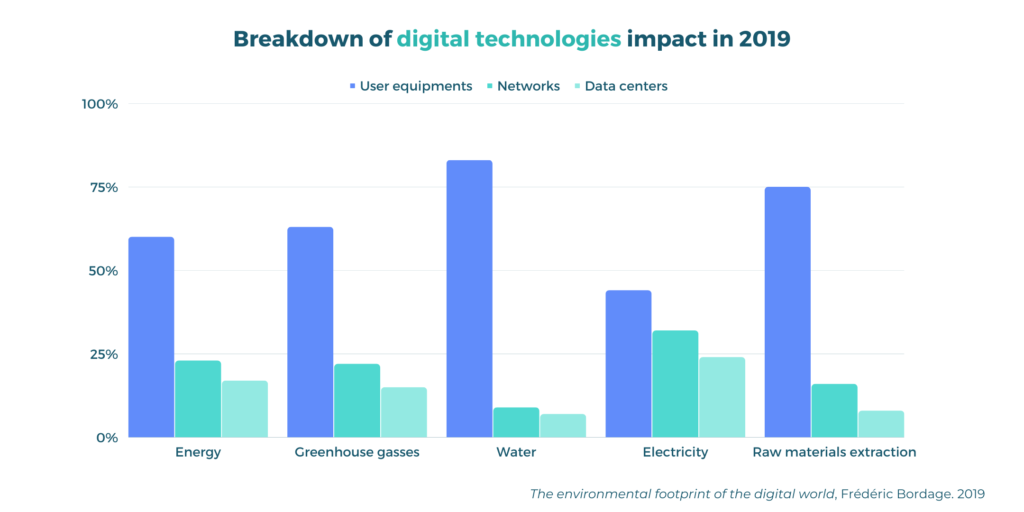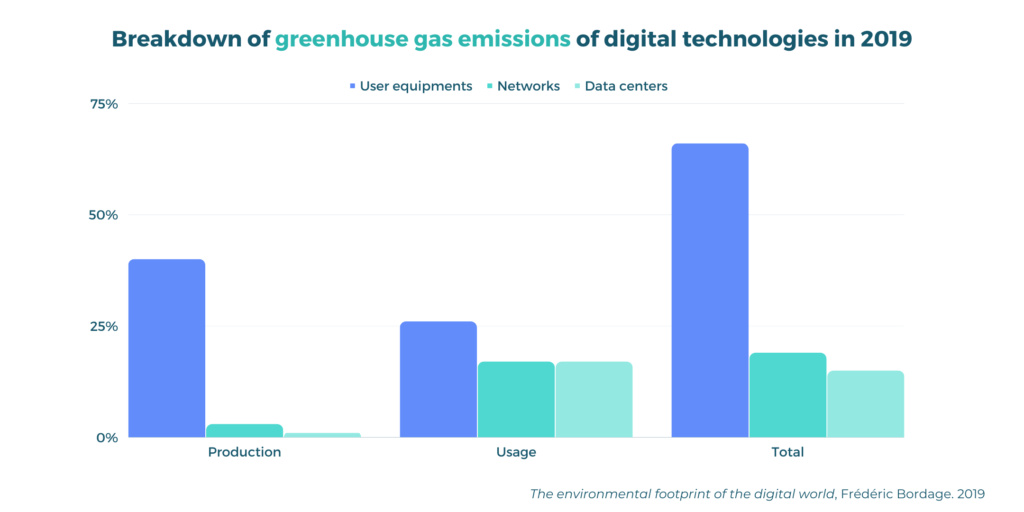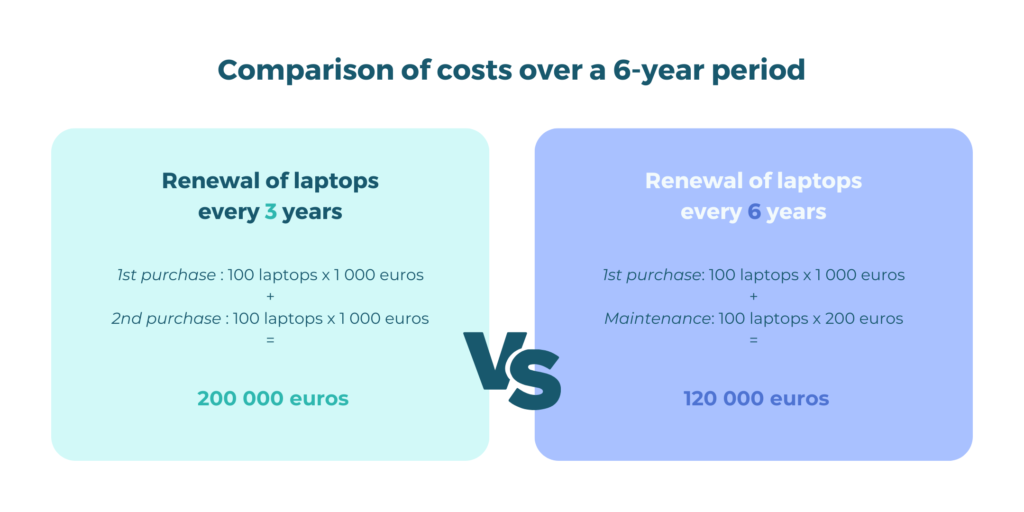Why should you extend the lifespan of your company’s digital equipment?
Reading time: 5-6 mintues
Reading time: 5-6 mintues

You’ve analyzed your company’s carbon footprint, and you’re not sure how to reduce your greenhouse gas emissions? Do you work in a company where you use computers, laptops, or smartphones on a daily basis?
Globally, digital technology has an impact on the environment and human well-being that cannot be overlooked. It’s enough to mention that it accounts for around 4% of global emissions and that this figure is set to rise as the sector grows by around 9% a year (source) to get an idea of the scale of the subject.
Digital technology also has a significant impact on carbon reports and finances, which is hardly surprising given its central role in many companies’ operations. In this context, extending the lifespan of your company’s IT equipment could be one of the most beneficial measures you could take. This simple action will not only help you reduce your greenhouse gas emissions*, it will also save you money, reduce your IT waste, and set up a more ethical (environmentally and socially) approach within your company.
*Discover why we talk about greenhouse gas emissions and not just CO₂.
If you’ve already analyzed your company’s carbon footprint, you’ve surely realized the significant impact of digital technology on it.
Digital equipment produces not only emissions linked to energy consumption (scope 2), but also to the purchase of goods (scope 3). Consequently, paying attention to the frequency and quality of purchases is fundamental to limiting greenhouse gas emissions.
As a reminder, even if you don’t manufacture your own computers, smartphones, printers, etc., the greenhouse gas emissions linked to their production will still be included in your indirect emissions (scope 3). The aim of this approach is to make companies more accountable for their purchases and choice of suppliers/partners.
What’s more, although in this article we’re focusing primarily on carbon impact, digital technology has many other consequences on the environment and human well-being. The limited availability of raw materials, the toxicity of waste, working conditions, water consumption, etc., are also fundamental issues that our society needs to address and act on.
User equipment (computers, smartphones, tablets, etc.) is the digital category with the greatest impact, mainly due to the manufacturing phase, which is responsible for 60% of the greenhouse gas emissions caused by this category (see below).
This may seem surprising, given that we often hear about the impact of data centers on the environment. Of course, this digital category also has a significant impact, and, as you can see from the graphs below, its energy consumption is particularly high.
Ideally, a strategy to reduce greenhouse gas emissions would include actions affecting as many categories as possible, but if we think in terms of priorities, then it makes sense to focus on the category that has the greatest impact and, at the same time, on which you have the most scope of action.


We’ve shown that the priority is to act on user equipment, and in particular on the emissions linked to its production.
Extending the lifespan of your company’s IT equipment could be a key action in reducing your carbon footprint. This would enable you to :
Let’s take an example. If you had to choose between buying new, more energy-efficient laptops and doubling the lifespan of your existing ones, the second option might turn out to be the more attractive. Improving the energy efficiency of laptops would reduce emissions linked to energy consumption, and this is, of course, important, especially in the case of intensive use. But this measure will only affect greenhouse gas emissions linked to computer use, which are lower than those linked to production.
If we take the example from the previous paragraph and apply it to your company’s carbon footprint, the result would still be the same: doubling the lifespan of your computers would probably be the best option. Indeed, the first option would enable you to reduce emissions linked to energy consumption but would exponentially increase those linked to the purchase of goods, potentially resulting in a higher carbon footprint.
Of course, the ideal would be to have energy-efficient computers with a lifespan of 10 years, but this comparison is useful to help us think in terms of priorities, even if, of course, the aim is to implement as many actions as possible, in order to accelerate your company’s transition.
If you have 100 laptops in your fleet and decide to extend their lifespan from 3 to 6 years, this could save you around €80,000 over 6 years (see comparison below).
Let’s suppose that a company has a hundred laptops in their IT equipment that need to be renewed every 3 years. Each computer costs 1,000 euros to purchase. If your company doesn’t extend its lifespan, you will have to buy new computers twice during this six-year period. If, on the other hand, you take care to extend the lifespan of its equipment, we could estimate that after three years you will have maintenance costs amounting to 200 euros per computer (this cost could include, for example, a cleaning and replacement of the RAM, or a cleaning and replacement of the battery).
As you can see from the table below, deciding to extend the lifespan of your company’s IT equipment is also more profitable from a financial point of view.

We’ve established that extending the lifespan of your digital equipment is a measure whose impact could be significant and is, therefore, necessary. But how do you go about it in practice?
Implementing this measure on a corporate scale means involving all levels and departments (IT, communications, HR, finance, etc.). This action aims to change consumption habits that lead us to change equipment even when it’s still functional or repairable, and as such, it can seem an insurmountable challenge.
However, making a commitment to extending the life of computers, smartphones, etc. translates into many small actions that can easily become part of the daily routine of your company and your employees. For example, avoiding blocking the air vents on your laptop, updating it regularly, and cleaning it from time to time are little tricks that many of us are not used to, but which are beneficial for the computer.